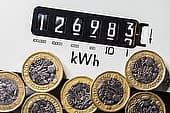Home > Energy > News > Record number of electricity switches in 2019
Record number of electricity switches in 2019
6.4 million customers switched electricity supplier in 2019, breaking the record of 5.8 million set in 2018.
It marks a 9% increase in households switching suppliers in 2019 with April bringing the highest figure ever in a single month.
While small and medium suppliers are benefiting from switching behaviour, the rate of their gains has slowed in comparison to previous years.
This follows the collapse of several small suppliers in 2019 after a spate of similar collapses in 2018.

Record year
The figures supplied by trade association Energy UK demonstrate that switching is becoming the norm for households reaching the end of their fixed deals.
Electricity switching doubled since 2014 when 3.2 million households switched, and this figure has steadily increased over the past five years.
April 2019 marked the best month on record for electricity switchers as over 660,000 customers switched between providers.
On average, more than half a million customers switched every month, with almost 520,000 switching in December 2019, an increase of 12% on the same month in 2018.
Learn more about switching energy provider in our dedicated guide and click here to find out about the Energy Switch Guarantee and what it means for customers.
Challengers still benefiting
The figures show small and medium suppliers are still gaining customers from the Big Six, although the rate of customers switching away from major providers has slowed.
While smaller suppliers gained 1.5 million more customers than they lost to larger suppliers, the longer-term trend shows more customers are moving from small and medium providers back to larger ones.
For example, back in June 2018 only 7% of electricity switches were from small and medium suppliers to large ones. The figures for December 2019 show this had increased to 18%.
With 32% of switching customers in December 2019 going from larger energy providers to smaller ones, however, it's still mainly the major companies losing out.
Switching encouraged
Over recent years, there has been a concerted effort to encourage customers to shop around for cheaper energy deals, and the increase in switching behaviour shows the success of this push.
That said, Ofgem released a report in October 2019 finding that 53% of domestic customers were on expensive default tariffs, a figure that hadn't changed year on year.
This suggests that a large proportion of customers aren't inclined to switch or, perhaps, don't feel confident enough to navigate the market.
This could be linked to the fact that switching became the second most complained about problem to the Energy Ombudsman in Q4 2018.
It remained the second most complained about issue in Q1 2019 and Q2 2019 before dropping out of the top three in the most recent figures we have for Q3 2019.
The spate of small energy supplier collapses in 2018 and 2019 may explain why customers are switching to them at a lower rate.
The recent collapse of Toto Energy in October 2019 was especially problematic for customers as up to 43,000 of them had been transferred from Solarplicity in the run-up to their own collapse a few months earlier.
Ofgem has already implemented stringent new checks on prospective energy suppliers and hope to implement reforms to check on the health of existing energy suppliers too.
Switching energy supplier is still an effective way of saving money on energy bills. While the figures for 2019 show a welcome rise in customers shopping around, it remains to be seen if small and medium suppliers continue to benefit at the expense of larger ones.
Compare energy deals using our free comparison checker.
Get insider tips and the latest offers in our newsletter

We are independent of all of the products and services we compare.

We order our comparison tables by price or feature and never by referral revenue.

We donate at least 5% of our profits to charity, and we have a climate positive workforce.
Latest News

02 January 2024
Energy prices increase by 5%
23 November 2023
Energy price cap to rise 5% in January 2024
24 October 2023
Energy companies must do more to support customersGet insider tips and the latest offers in our newsletter



Comments